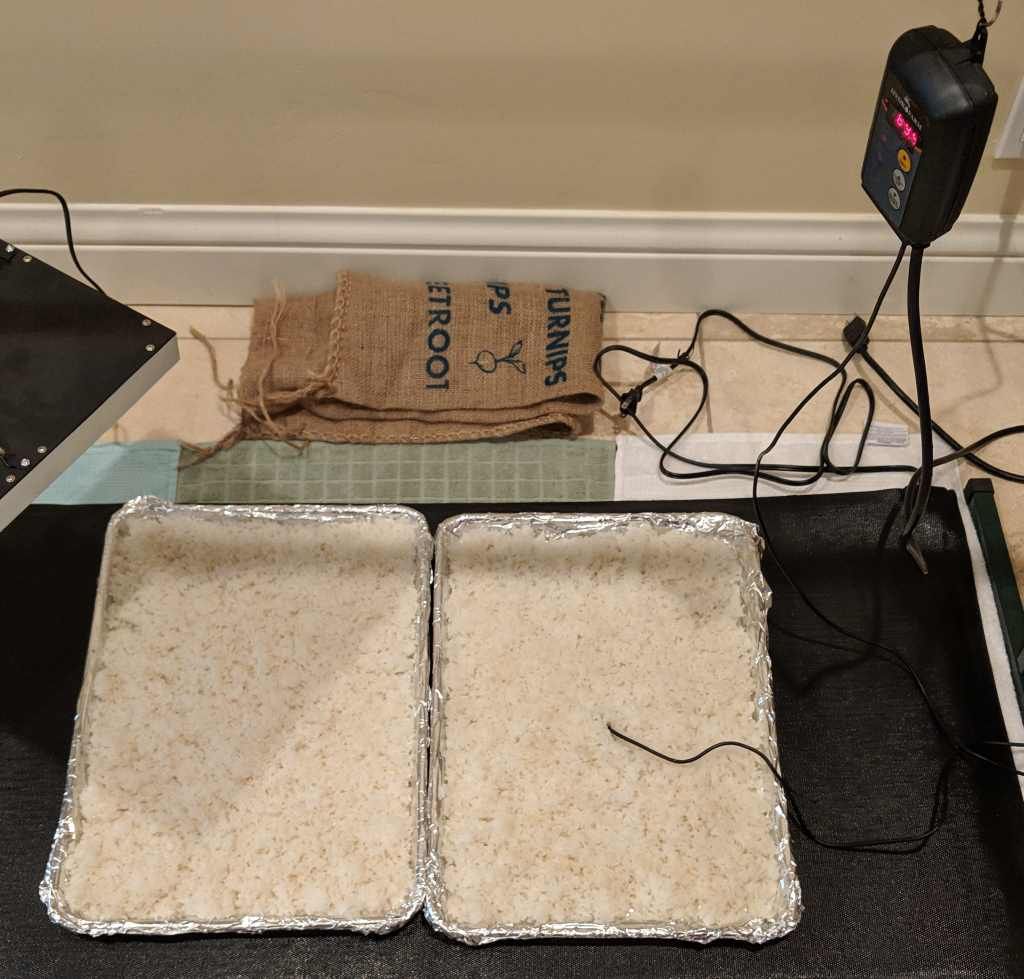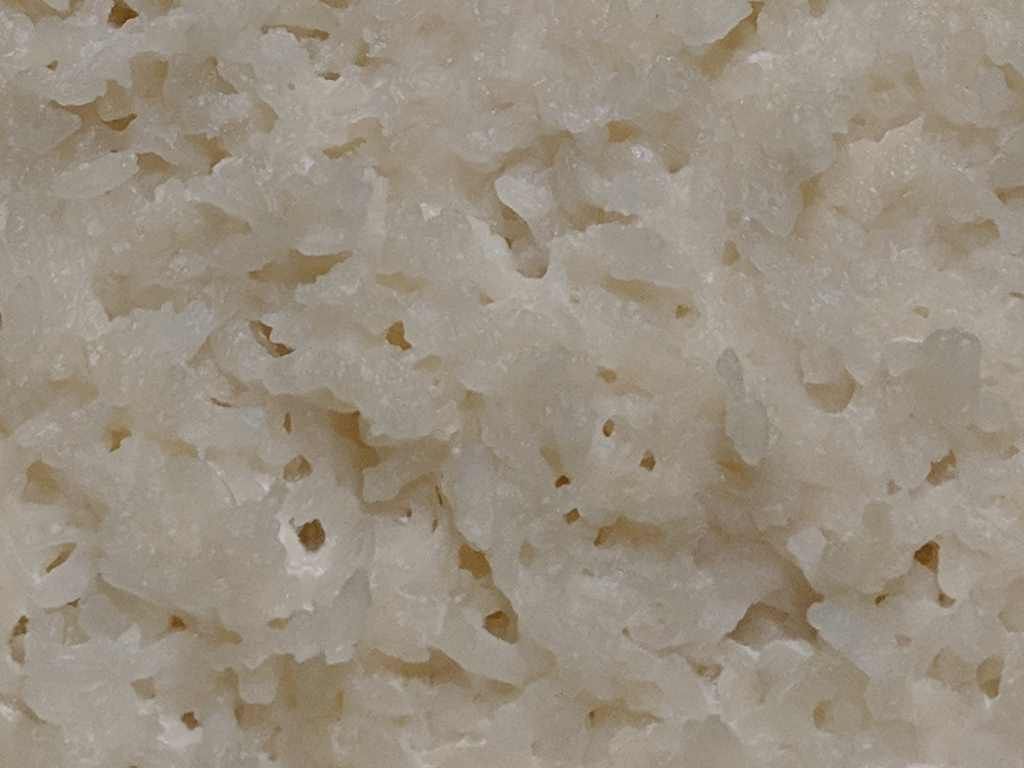How to Grow Koji - The Quick and Easy Way
Intro #
Koji (Aspergillus Oryzae) is a mold used in traditional Asian cuisine. I had recently began experimenting with the creation of Chinese rice wine (more accurately beer) which uses a starter called Qū. Curious as to the composition of Qū, I discovered an article on Wikipedia that provided my first exposure to koji.
Koji inoculated rice is the first step in the production of various complex foods and beverages - whether it be sake, miso, shoyu, aging steaks, or many others. I wrote this post for those who want to grow koji with minimal complexity and time commitment.
Equipment #
- Large Baking Sheet
- Rice Cooker - Cooking rice on the stove is a hassle (4 cup+ capacity)
- Heating Mat + Digital Thermostat - Used these for years as I propagate clippings and sprout seeds for my garden, though I know this isn't common. You can pick up both for $30 - $60 depending on the size of the mat selected.
- Old Towels or Cardboard - Fold or size to the heating mat to reduce rapid energy loss to the floor or table on which you'll place this project
- Spoon - Scooping and spreading rice. Preferably not metal as it'll scratch the protective coating in the rice cooker.
- Clean Paper Towels or Fabric Towel - We'll moisten and place overtop the baking sheet to maintain a warm and humid environment conducive to mold growth.
- Food Thermometer (optional) - Ensure your rice is < 140° F when incorporating the koji starter, otherwise use the low-tech method of sticking a clean finger in the rice - if it's not uncomfortable it's cool enough.
- Spray Bottle (optional) - Occasional spritzing is required to maintain high humidity levels, slow and even dribbling from a glass is also an option.
Major Consumables #
- 20g Koji starter
- 4 Cups of rice - Calrose sushi rice has been a dependable option
Disinfect #
As we're trying to grow a specific mold, it's best to disinfect all equipment which will come in contact with the rice to prevent infection by an undesired organism. I use diluted Star San concentrate.
Cook Rice #
Rinse 4 cups of rice, add the requisite amount of water, and start the rice cooker - for a beginner this will produce fine results. For a bit more control, experimentation with the water level will allow for more firm texture.
Mix Koji Starter #
It's easiest to propagate koji from a known starter strain as opposed to a random wild strain (project for another day). Koji starter can be found on the web; I bought my initial 200g supply from Amazon for ~$27 though far less would have been sufficient.
Break apart 20g of koji starter into 2 cups of water and allow to rehydrate - mash and mix. Ensure the cooked rice and has cooled to < 140° F and incorporate the koji water and solids - mix well to get an even coating.
Spread Rice #
Dump the coated rice on a baking sheet and spread evenly. Place the baking sheet on the heating mat, insert the thermostat's temperature probe in the center of the sheet of rice angled such that the probe does not touch the bottom of the sheet.

Cover #
Mold thrives in a warm and humid environment with minimal airflow; place a moistened towel overtop the baking sheet (or moistened paper towels). Ideally the towel does not touch the rice as it'll act as a wick for moisture and cause the upper layers of your rice to dry more rapidly.
Set Temperature #
The set point temperature on the thermostat influences the flavor of your final koji rice. If a more savory flavor is desired, use 86° F which causes the koji to produce protease enzymes in abundance. Set to 104° F to encourage greater production of amylase enzymes which convert the rice starches to sugar for sweet and fruity flavors. Note that at the extremes, enzyme production is not exclusively one or the other.
Check Periodically #
Spritz both the koji rice and the towel(s) with water periodically; every 6 hours is sufficient. And no, it's not necessary to do so in the middle of the night - before bed and once you're up for the day.
Give the rice a good mixing and relevel at the 1 day mark to encourage more even growth.
If conditions become sub-optimal or food supply is running low the koji will begin the formation of spores in order to survive potentially less hospital condition - the appearance of yellow or green spots mark this stage at which harvest should performed immediately. Otherwise, harvest at 2 day as the koji will have sufficiently inoculated the rice.
Harvest and Enjoy! #
Although fresh use is always best, freezing is a great option for long term storage. Simply cut the rice into sheets sized appropriately for freezer bags and store for up to 1 year.
